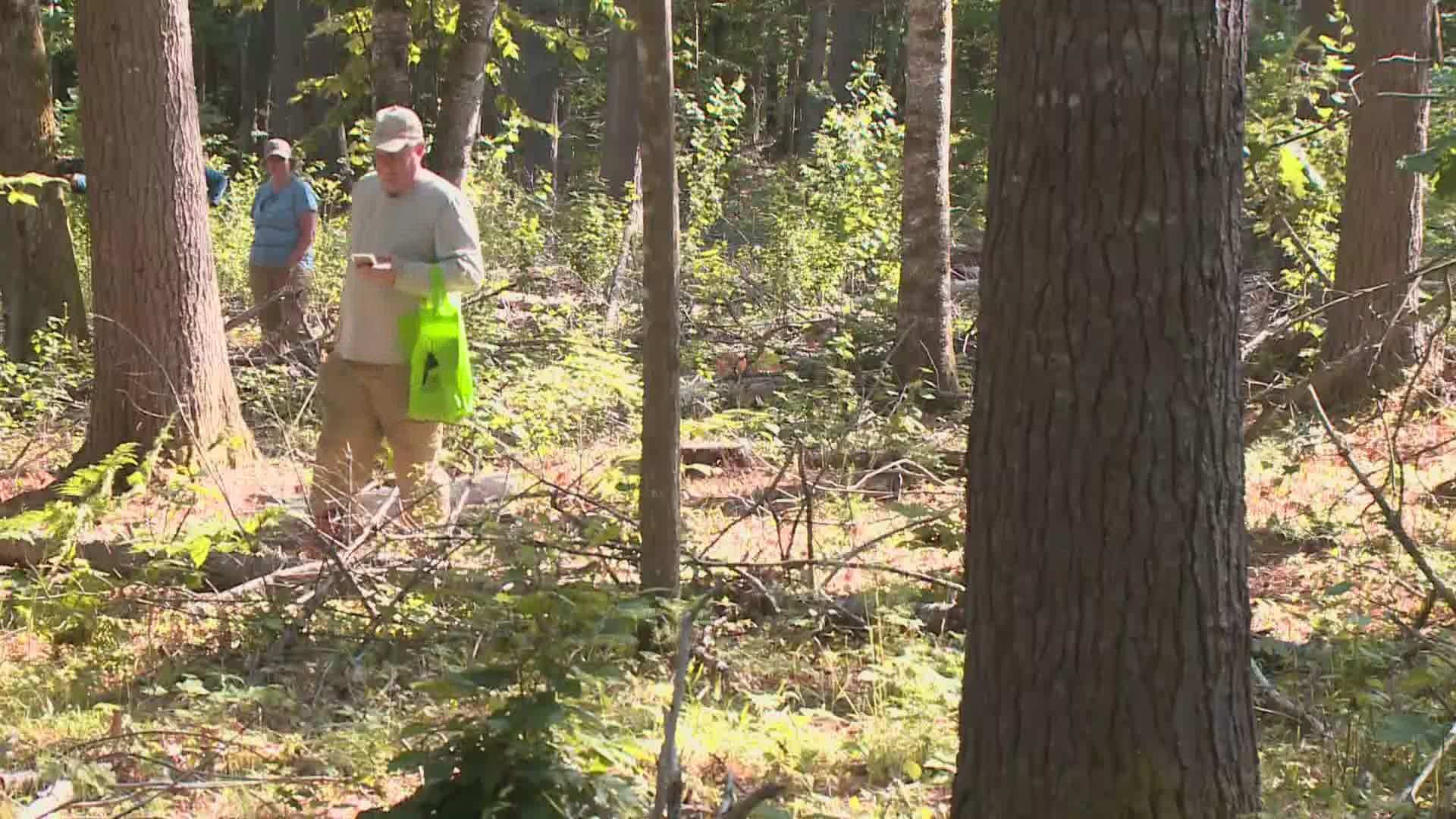BOWDOIN, Maine — With 90% of our state covered in trees, it's safe to say most of Maine is now one big tick habitat. But with such a large state, there's simply too much ground to cover to find out where the ticks are.
According to the U.S. Centers for Disease Control, deer ticks can carry a number of diseases, including Lyme and other tick-borne infections.
As part of its active tick surveillance program, University of Maine researchers are getting a helping hand from several hundred landowners across nine different Maine counties.
"There is no way we could sample all of these properties on our own, it really takes all these volunteers to make it happen," said Elissa Ballman, the citizen science coordinator for the Maine Forest Tick Survey.
The survey is in its second year. In 2020, volunteers collected 1,600 ticks. More than 25% of the 445 black-legged tick nymphs that were tested carried the pathogens that cause Lyme disease.
During July of this year, 200 landowners who have five to 1,000 acres are dragging for ticks on their land. The ticks will be identified and tested for pathogens that cause Lyme disease, Babesiosis, and Anaplasmosis, which are the most common tick-borne infections.
Eileen and Gordon Johnson love to walk trails in the woods on their 100-acre property in Bowdoin. But over the years they have seen a definite increase in deer ticks, which they're finding in leaf litter and in the grass.
"Ticks are not a big draw for being out in the woods," said Johnson.
This is the second time Johnson signed up to participate in the survey. He received online training, drag cloths, tweezers, and other supplies.
Johnson is dragging for ticks in an area of his woods that was harvested several years ago. Last year's survey found something interesting: There were significantly fewer black-legged ticks on recently harvested timberland than on properties that haven't seen trees cut in more than 20 years.
"These results could help determine the impact of foresting operations on tick density and tick populations," said Johnson.
Johnson is looking for nymph ticks, which are young deer ticks that are at their peak activity. They are very tiny and can be hard to spot on the body.
NEWS CENTER Maine Tick Week YouTube Playlist
Jamie Gillette and her husband, Jon Van Dis, found 23 nymphs after dragging part of their 60-acre property in Union.
The nymphs will be tested for Lyme, Anaplasmosis, and Babesiosis. Both her husband and their daughter have had Lyme disease, but have since recovered. Gillette says knowing what kind of ticks are on her property and what diseases they carry is important.
"That's going to give me a better idea, if I see one and it's been biting and what are the chances it is going to have a disease with it," said Gillette.
Gordon only found one deer tick last year, which had Lyme disease. The low numbers were possibly due to drought conditions. This year, he hopes to find more deer ticks, which will provide an important snapshot of what's happening on his land.
For information on to how to prevent tick bites from the CDC, click here.
For information on cases of Lyme disease reported by the Maine CDC in real time, click here.

